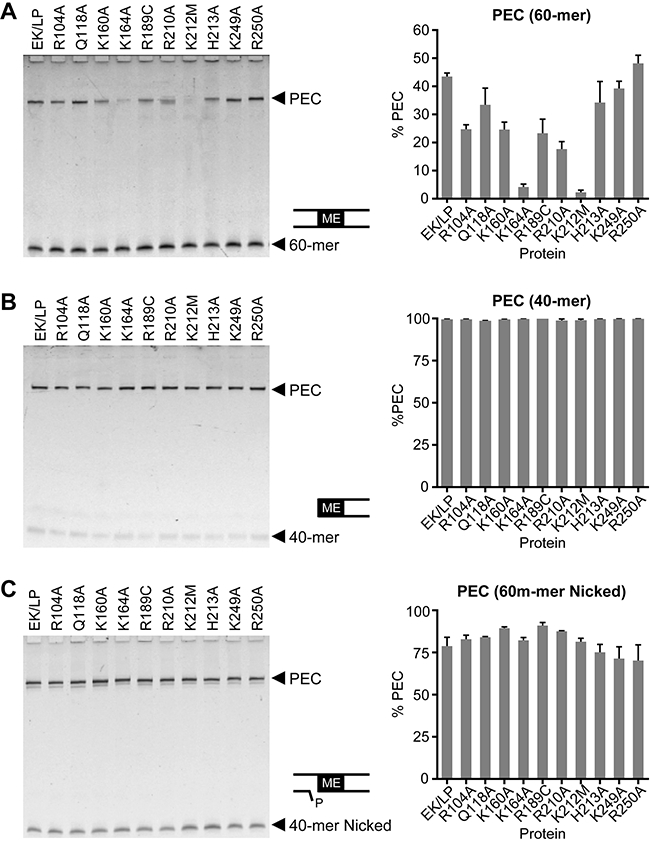Fig. 5. PEC assay.

A. PEC formation on full-length (60 bp) substrate is reduced for K164A, R189C, R210A and K212M (note the distributive nature of PECs for R210A).
B. PEC formation on a truncated substrate lacking the 20 bp dbb. Mutants that were deficient in forming stable PECs with the 60-mer have had their activity rescued. This suggests that these residues interact with the dbb.
C. PEC formation on a substrate containing a nick that mimics the first nick on the transferred strand during dbb–ES cleavage. Total PEC formation is increased and binding activity for the mutant Tnps is restored to control levels. We believe that this is due to the nick providing an increase in the flexibility of dbb DNA.
